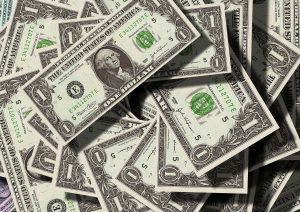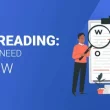In the world of finance and economics, few entities hold as much power and influence as the United States Federal Reserve. As the central bank of the world’s largest economy, its policies and decisions ripple across the globe, impacting markets, businesses, and individuals alike. In this feature story, we’ll delve into the intricacies of the Federal Reserve’s monetary policy and its profound influence on the economy.
The Steward of Economic Stability
The Federal Reserve, often referred to simply as “the Fed,” was established in 1913 to serve as the guardian of the nation’s economic health. Its primary mission is to foster a stable economic environment characterized by full employment and controlled inflation. The Fed employs a range of monetary policy tools to achieve these goals, with its most well-known lever being the manipulation of interest rates.
Interest Rates: The Fed’s Most Potent Tool

The most visible aspect of the Federal Reserve’s influence on the economy is its control over interest rates. Through the Federal Open Market Committee (FOMC), the Fed decides whether to raise, lower, or maintain the federal funds rate. This rate determines the cost at which banks can lend money to one another and sets the tone for borrowing costs throughout the economy.
When the economy needs a boost, the Fed tends to lower interest rates, making it cheaper for individuals and businesses to borrow money. Conversely, when inflation threatens to run rampant or the economy overheats, the Fed may choose to raise interest rates to cool things down.
Quantitative Easing: An Unconventional Approach
In the aftermath of the 2008 financial crisis, the Federal Reserve introduced a more unconventional approach to monetary policy known as quantitative easing. In this strategy, the Fed purchases vast quantities of government securities and other financial assets, injecting money directly into the financial system. This strategy aims to lower long-term interest rates and stimulate economic growth.
The Fed’s Influence on Financial Markets
The actions of the Federal Reserve send shockwaves through financial markets. When the Fed signals a change in interest rates or announces a new round of quantitative easing, investors react swiftly. Stock markets can soar or plummet, bond yields can spike or plummet, and the value of the U.S. dollar can fluctuate dramatically, affecting global trade and international economies.
Impacts on Main Street
But how does the Federal Reserve’s monetary policy affect everyday Americans? The link between Fed policy and the average citizen may not be immediately apparent, but it’s very real. Changes in interest rates can affect the cost of mortgages, car loans, and credit card debt. Moreover, these policies have a profound impact on employment rates. When the economy is humming along and businesses are expanding, jobs become more plentiful. However, when the Fed raises rates to combat inflation, businesses may tighten their belts and job growth can slow.
Balancing Act: The Fed’s Dilemma
As with any powerful institution, the Federal Reserve’s actions are not without controversy. Critics argue that its policies can exacerbate income inequality, as the wealthy benefit more from rising asset prices than the average American. Moreover, the Fed faces the unenviable task of striking the right balance between maintaining a stable economy and avoiding financial bubbles that can lead to economic crashes.
Conclusion: The Fed’s Enduring Impact
The Federal Reserve’s monetary policy is a complex, multifaceted tool that influences nearly every aspect of the U.S. economy. From the interest rates we pay on loans to the job market’s health, the Fed wields immense power over our economic well-being. As we continue to navigate the ever-changing economic landscape, understanding the Fed’s role and its policy decisions is crucial for both individuals and businesses.
In future articles, we will explore how the Federal Reserve arrives at its decisions, the personalities behind the Fed, and the ongoing debates surrounding its role in shaping the nation’s economic destiny. The Federal Reserve’s monetary policy will remain a central topic of discussion, and it’s essential to stay informed on the matter.









